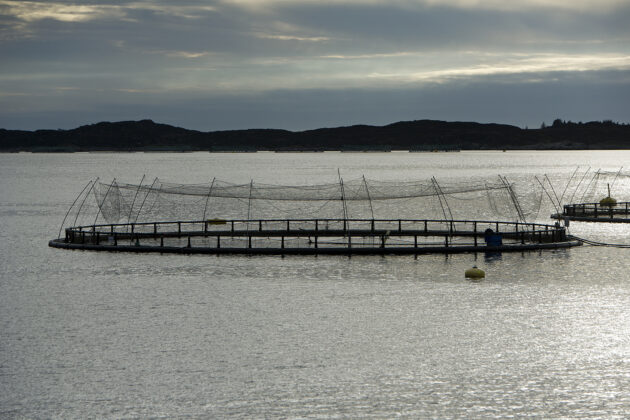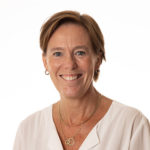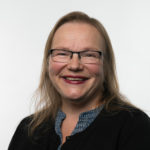A brief overview of fish farming systems

There are several ways to farm a salmon. Here is a short explanation to four different fish farming systems in use and under development in Norwegian salmon farming.
Content
Four different fish farming systems
1. Fish farming in open net-pens

The still most common way to farm salmon is to keep salmon fry in land-based tanks (in practice a closed containment fish farm onshore) with water flowing continously through the system until the fish reaches the smolt stage and weighs around 80–100 grams. After this the fish is transferred to open net-pens in the sea.
The salmon lives there until it reaches its harvesting weight of 4–5 kilograms.
Ocean water flows continuously through the net-pen, and the fish living inside are quite subjected to the forces of nature.
One drawback to this is that waste and pathogens are freely exchanged with the surrounding environment. In addition, the net-pens can be damaged and fish may escape.
Benefits of such open pens include the fact that they represent the cheapest method for farming salmon, and allow the fish to live as close to nature as possible.
2. Land-based Recirculating Aquaculture Systems (RAS)

These closed containment systems are using water recirculation technologies that treat and recycle as much as 99.9% of the water.
RAS allows for high degree of control of the rearing environment, and makes avoidance of sea lice, and nutrient reclamation possible.
In Norway, land-based smolt production in RAS has expanded considerably, and there is considerable interest in post-smolt production in RAS. Also, land-based to slaughter with RAS technology is emerging.
RAS system are complex systems, where operations require skilled personnel. Some technologies within a RAS system, for example water treatment may differ between facilities, but common for all are the need for treating water for nitrogen compounds to avoid toxic effects for the fish.
3. In-sea floating semi-closed containment system (S-CCS)

These systems enable to control and reduce the interactions between farmed fish and the external environment.
Common to all these platforms is that deep water is pumped into the systems, to secure stable water quality and to avoid pathogens and parasites located near the surface. The systems differ to the extent of treatment of inlet water and collecting waste.
Also common for all systems is the physical barrier that separates the fish from the external environment, however the design may differ. While some systems have rigid walls, others use flexible tarpaulins.
Most systems are used for post-smolt, before the fish are further transferred to open net-pens, but systems for market sized fish are also available.
During the time frame of CtrlAQUA (2015-23), the systems have developed a lot, but still many will define them as being in a piloting stage where further development is needed.
4. Farming in exposed facilities

Farming in exposed off-shore environments is driven by the need for increased space for aquaculture.
Exposed facilities can be located farther away from the wild salmon in the coastal areas, which can help reduce the negative impact caused by salmon lice, fish escaping from the net-pens and genetic interaction.
However, these facilities are also associated with challenging conditions regarding their operations, structures and equipment due to strong and alternating winds, currents and waves, in addition to the increased distance to the facilities.
Farming in exposed localities requires new technical solutions combined with operational concepts for maintaining security and ensuring production reliability. Commercial salmon production is currently tried out in experimental net-pens.

CtrlAQUA SFI
From 2015-23 Nofima hosted the Centre for Research Based Innovation – CtrlAQUA SFI.
In the Centre, the development of biological and technological innovations has been done for the production systems RAS (Recirculating Aquaculture Systems) and S-CCS (Semi-Closed Containment Systems). Both are referred to as closed-containment aquaculture systems (CCS), as they are separated from the surrounding ecosystem by an impermeable or semi-permeable wall. These systems allow fish to stay longer away from open net pens, thus preventing lice infestation and escapes.

